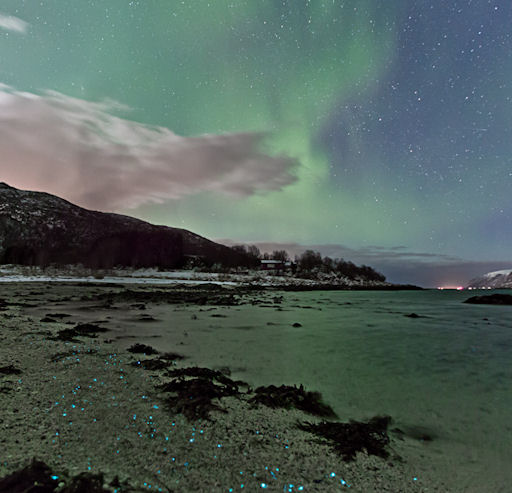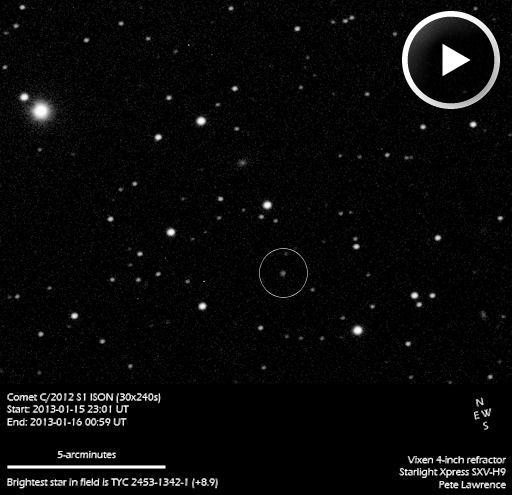They came from outer space--and you can have one! Genuine meteorites are now on sale in the Space Weather Store. | | |
JUPITER-MOON CONJUNCTION: When the sun goes down tonight, step outside and look east. The Moon and Jupiter are converging for a tight conjunction on Monday evening, Jan. 21st. Most sky watchers will see the two bright bodies just a fraction of a degree apart. Observers in parts of South America will witness an even closer encounter--an occultation, in which the Moon passes directly in front of Jupiter. Sky maps: Jan. 20, 21.
CME IMPACT + MICROBIAL LIGHTS: A coronal mass ejection hit Earth's magnetic field on Jan. 19th at approximately 17:15 UT. The weak impact did not trigger a full-fledged geomagnetic storm, but it did illuminate the Arctic Circle with auroras. Frank Olsen photographed the display from a beach in Sortland, Norway; scroll past his picture to learn about the glittering lights in the sand:

The lights in the sand are bioluminescent dinoflagellates, a type of naturally glowing microbe. "To my surprise, I found these guys floating around on the beach tonight," says Olsen. "They looked great together with the auroras in the sky."
There is an interesting link between the auroras and the dinoflagellates. Both use oxygen to create their glow. In the case of the marine organism, a chemical pigment (luciferin) reacts with oxygen to create light. Meanwhile up in the sky, charged particles from the solar wind rain down on the atmosphere, colliding with oxygen molecules to create the telltale green hue of auroras.
More lights are possible tonight. NOAA forecasters estimate a 55% chance of polar geomagnetic storms as Earth passes through the wake of the CME. Aurora alerts: text, voice.
Realtime Aurora Photo Gallery
COMET OF THE CENTURY? Later this year, Comet ISON could become bright enough to see in broad daylight when it passes through the atmosphere of the sun. At the moment, however, it is a cold and lonely speck barely visible through backyard telescopes. On Jan. 16th, Pete Lawrence of Selsey, UK, photographed the potentially-great comet moving through space near the orbit of Jupiter:

"I created the animation using images taken through a 4-inch refractor, starting at 23h on the 15th of January and ending at 01h on the 16th," says Lawrence. "The comet is clearly visible moving among the stars of Gemini, in an area just to the south of Castor."
Comet ISON looks so puny now because it is more than 600 million km away. In late 2013, however, it will be much closer. A key date is Nov. 28th when Comet ISON flies through the solar corona only 1.2 million km from the surface of the sun. If the comet survives the encounter--a big IF--it could emerge glowing as brightly as the Moon with a sensational tail sure to create a worldwide sensation. Stay tuned!
Realtime Comet Photo Gallery
Realtime Space Weather Photo Gallery
Realtime Noctilucent Cloud Photo Gallery
[previous years: 2003, 2004, 2005, 2006, 2007, 2008, 2009, 2011]

